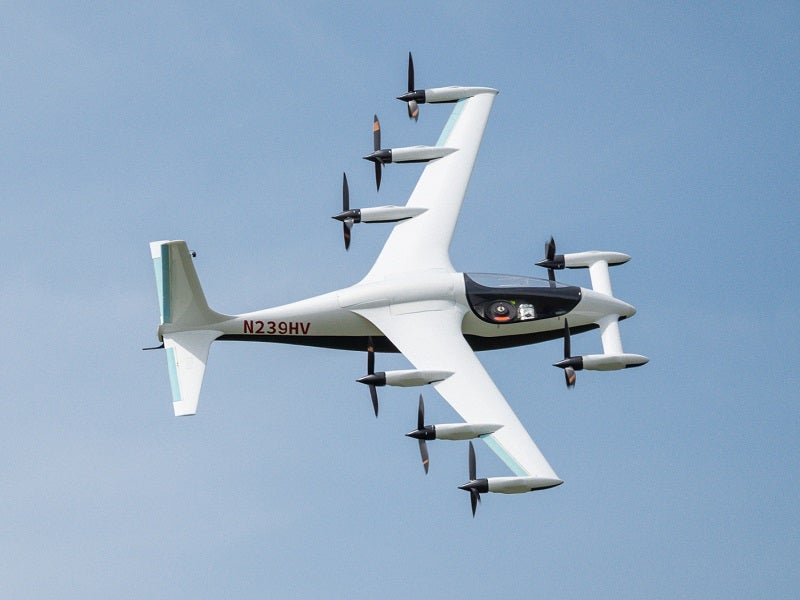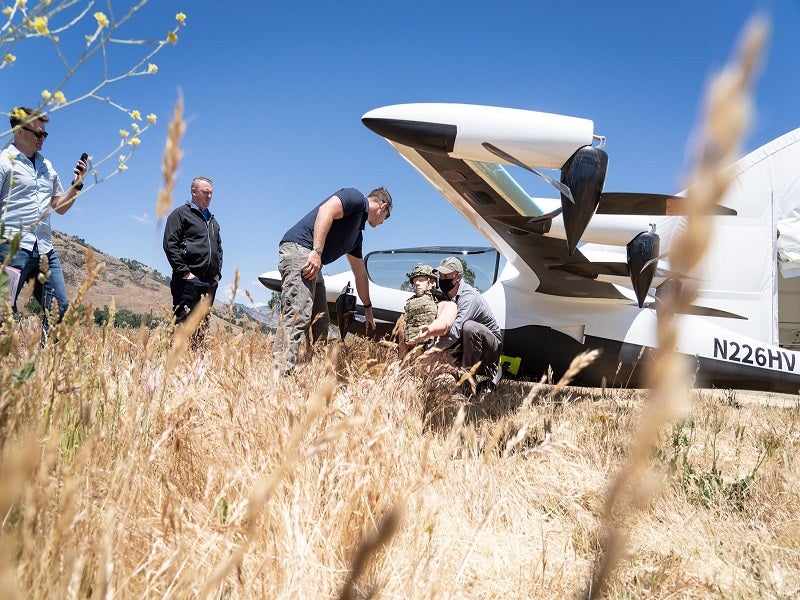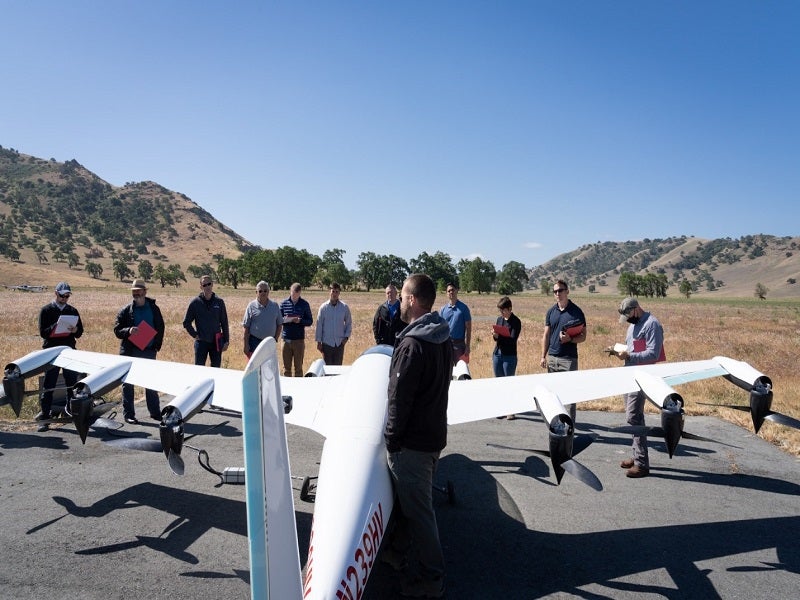The Heaviside eVTOL aircraft is an electric vertical take-off and landing (eVTOL) single passenger aircraft. It is manufactured by Kitty Hawk, a US-based electric flight transportation solutions provider.
The ultra-quiet, fully-electric aircraft was first unveiled in 2019. It was demonstrated to officials of the US Air Force’s AFWERX Agility Prime Programme during the first operational exercise of the programme in May 2021. Agility Prime aims to accelerate the commercialisation of advanced air mobility vehicles.
The programme leverages the testing resources of the US Air Force (USAF) and government use cases for distributed logistics and disaster management to reduce the regulatory and commercial risks for air mobility vehicles. The Agility Prime programme is evaluating several platforms for potential fielding in 2023.
The Heaviside aircraft falls under the programme’s area of interest (AOI) 2 effort, which is intended for vehicles with up to two passengers. It showcased its medical evacuation, personnel recovery, remote flying and logistics capabilities during the demonstration.
In July 2021, Kitty Hawk was awarded the airworthiness approval by the USAF for Heaviside aircraft as a part of the Agility Prime programme, enabling the next phase of flight testing of the platform. To be conducted under the supervision of the US Air Force Research Laboratory’s (AFRL) engineers, the tests will evaluate the potential use of the aircraft in both military and commercial applications.
Heaviside design and features
The Heaviside has eight tilting, variable-pitch electric propellers, including two at the front and six at the rear of the main wing. The rear main wing propellers give enhanced stability and low turbulence to the aircraft even when it is flying at lower altitudes.
The aircraft has the ability to take off and land on 30ft × 30ft (9m × 9m) unpaved surfaces.
It is a very quiet aircraft with noise levels as low as 35dBA at an altitude of 1,500ft (457m). The torque that is used in hover makes most of the noise. In cruise or forward transition mode, the noise almost fades away at around 1,000ft in around 30 seconds.
The eVTOL’s distributed electric propulsion (DEP) allows it to handle multiple motor or propeller failures and ensure a safe landing.
The fast and powerful aircraft completed more than 237 hover to forward flight transitions successfully while keeping approximately 25% of its battery charge in reserve.
Heaviside aircraft launch and recovery
The Heaviside aircraft has two flight phases. The initial phase is ‘hover’ during which the aircraft is launched vertically via rear tilt rotors that provide the necessary thrust for the vertical take-off.
In the second phase, the rotors tilt parallel to the aircraft’s forward movement and provide the forward thrust.
The pylons for the aircraft are mounted at the rear section of the wings. The boundary layer created by the rotors for propelling the aircraft forward can be dragged past the pylons for higher efficiency, and reduced power consumption and noise emissions.
The important in-flight safety feature of the aircraft is the flight control system that makes the pilot a decision-maker. The flight computer reduces the burden on the pilot and enhances safety. The aircraft is also equipped with a customised recovery system in the form of a parachute for a safe landing.
Performance of Heaviside eVTOL
The Heaviside prototype uses 120Wh of power per passenger mile at a speed of 161km/h. It can achieve a range of 100 miles (161km) and a maximum speed of 290km/h.






